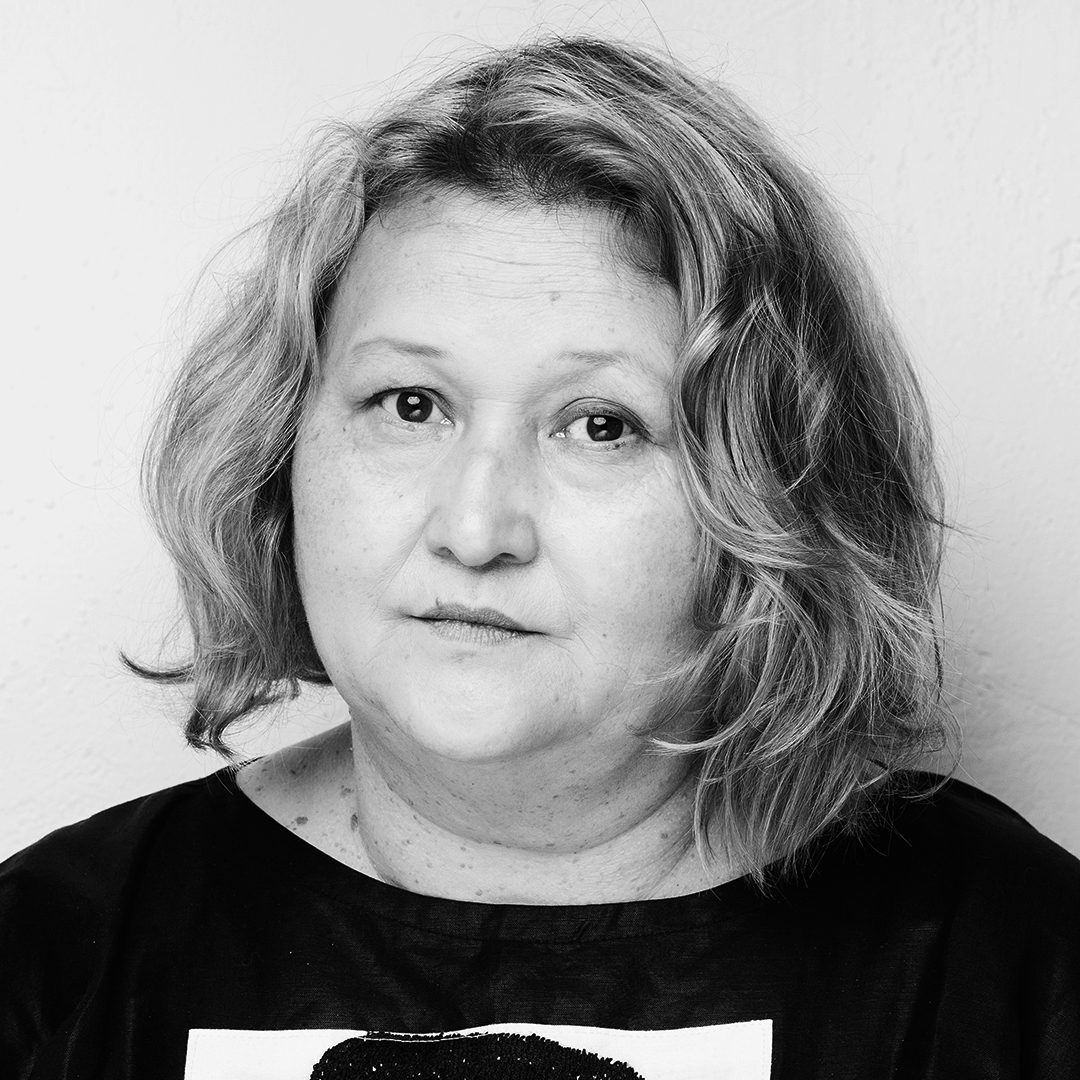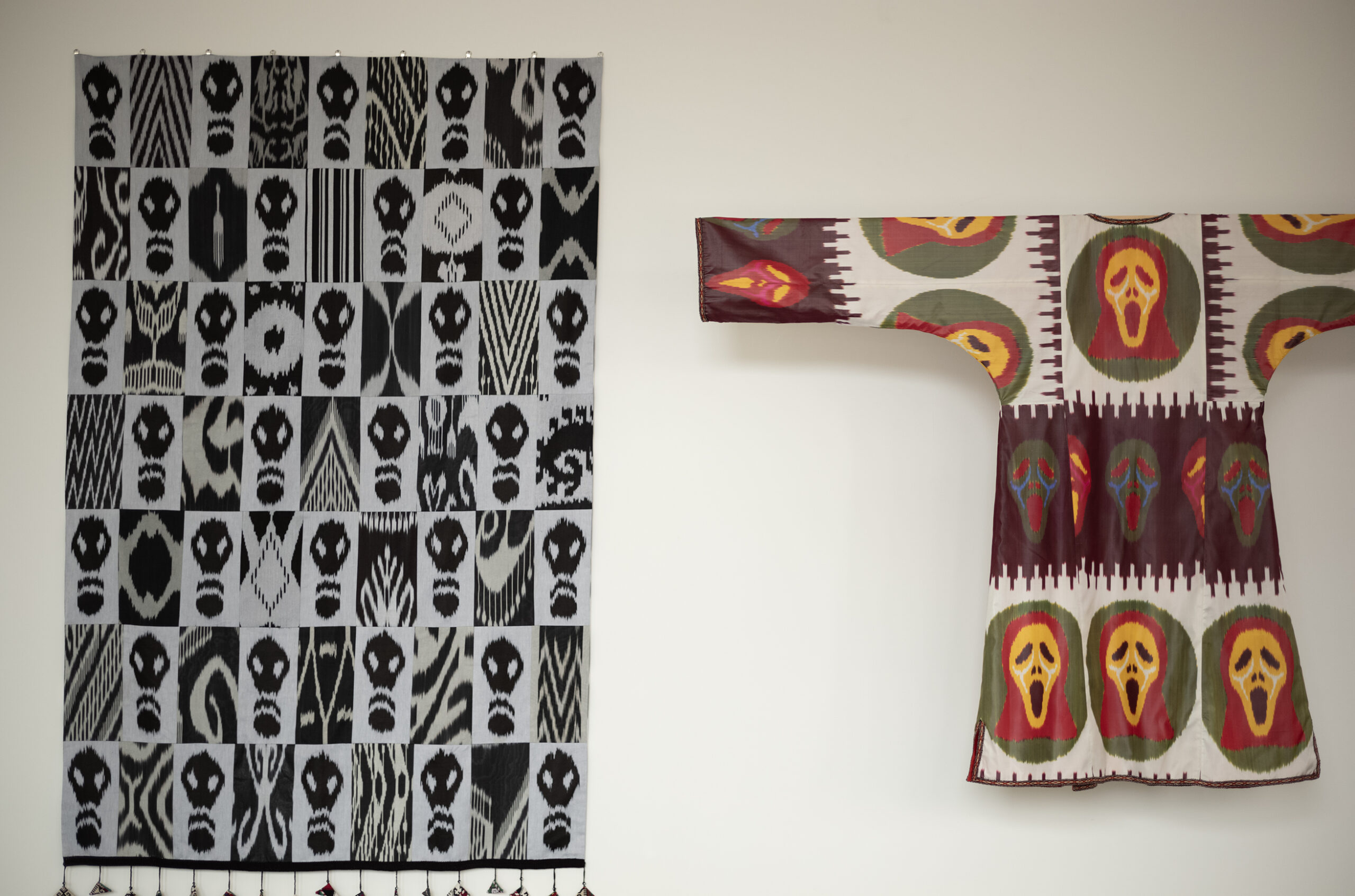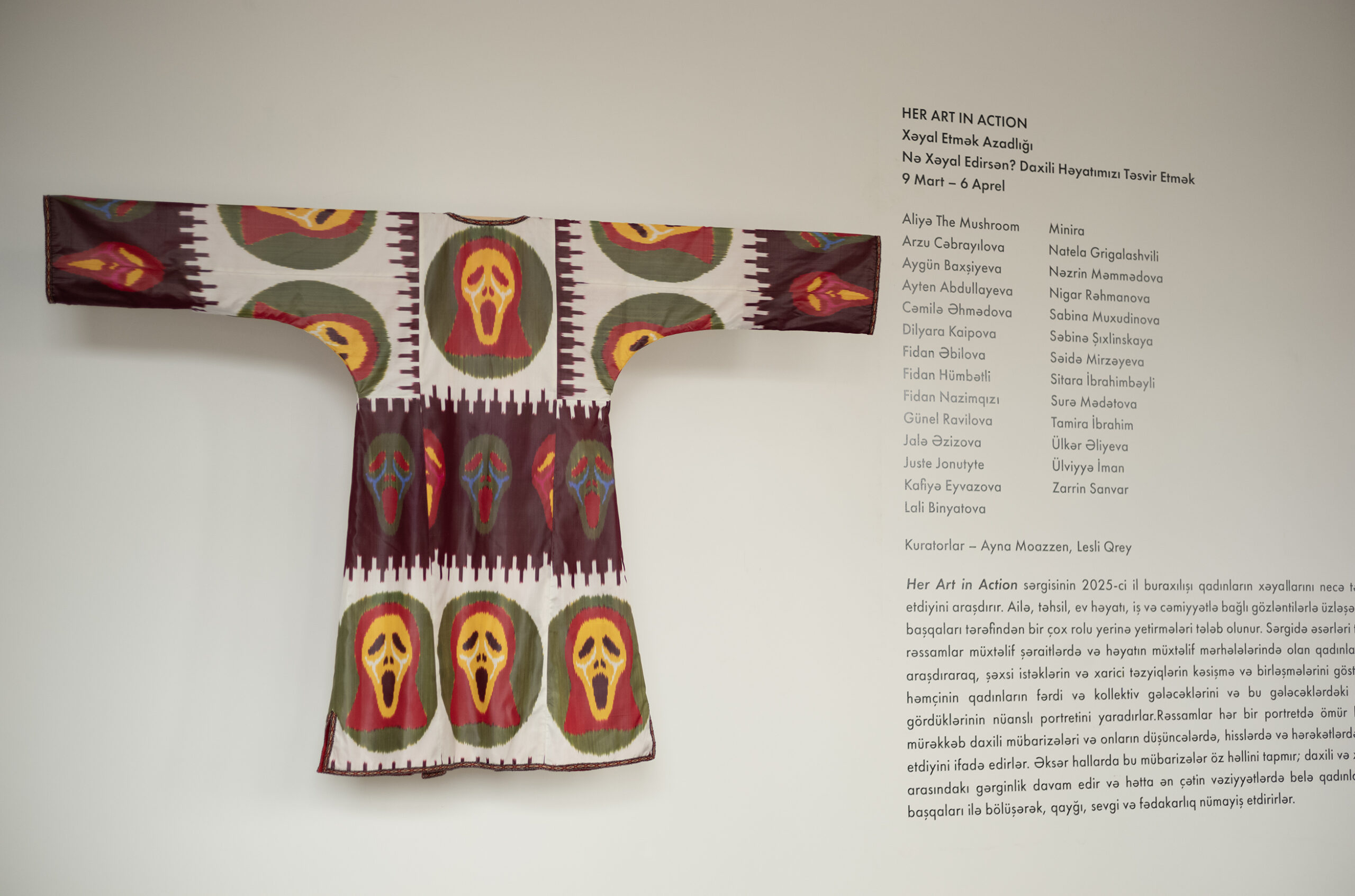
Dilyara Kaipova


Gazmask, 2025
Textile panel, traditional cotton ikat
190 x 125 cm
Scream mask, 2025
Handcrafted organic silk ikat,
Traditional women’s robe “Munisak”
A women’s robe made from “Krik” fabric follows a traditional cut. These robes, known as “Mursak,” (or Munisak) were an essential part of an Uzbek bride’s dowry, with up to 15 pieces included. The dowry (sarpa in Uzbek) was what a bride took with her from her parents’ home to her husband’s house, marking the beginning of her new life.
The textile panel “Gas Mask” is created using the traditional Central Asian technique “kurak,” which involves stitching together different textile fragments into a single fabric. These panels could incorporate patches from garments of past generations, antique embroidery, and fragments of both old and new fabrics and were often imbued with sacred meaning. Uzbek ikats, traditionally known as “abro fabrics,” are handcrafted using ancient artisanal techniques. Their patterns are applied to warp threads through a resist-dyeing process,giving them their characteristic blurred, fluid contours.
The textiles used in these presented works were produced in collaboration with folk artisans from Margilan, in the Fergana Valley. With the collapse of the USSR, the production of abro fabrics began to revive, as artisans sought to restore forgotten techniques and patterns. Traditional ornamentation is seamlessly combined with contemporary minimalist imagery, creating a dialogue on modern issues. The image of the “outsider” is woven into traditional patterns, forming a new, unconventional narrative that remains clearly understood. The archaic language of ornament is adapted to address pressing regional concerns—globalization and identity, gender inequality, environmental issues, and security.
